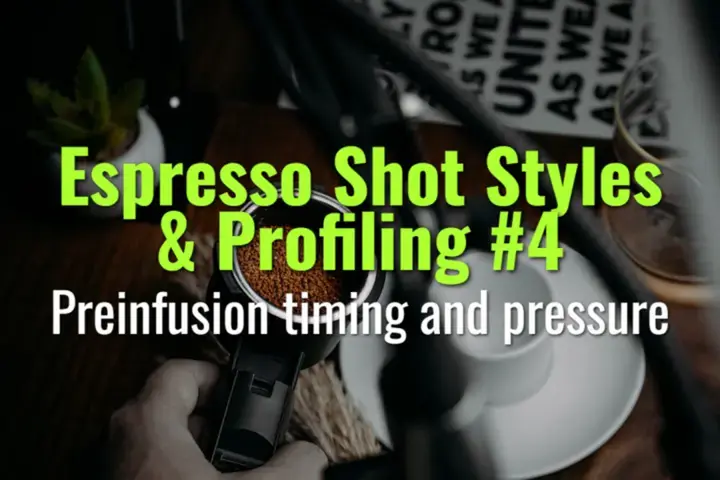Preinfusion timing and pressure
How preinfusion timing and pressure influence espresso extraction, flow dynamics, and final cup quality.
- Coffee Basics Nerds
- 2 min read
Article 4 of 12 in Espresso Shot Styles & Profiling/

What is Preinfusion?
- A phase where water wets the puck before full pressure is applied.
- Purpose: Evenly saturate coffee, reduce channeling, improve extraction consistency.
Timing Options
- Short Preinfusion (1–3 sec):
- Minimizes risk of blonding at start.
- Useful for traditional darker roasts.
- Medium Preinfusion (4–8 sec):
- Ensures puck fully saturates.
- Common in modern specialty espresso.
- Long Preinfusion (>10 sec):
- Creates softer ramp-up, mimics lever machine style.
- Useful for light roasts that resist extraction.
Pressure Profiles
- Low-Pressure Preinfusion (0.5–2 bar):
- Gentle saturation, minimizes puck disruption.
- Favored for delicate, light-roasted coffees.
- Medium-Pressure Preinfusion (3–5 bar):
- Faster saturation, balanced compromise.
- Often used in pump machines with flow restrictors.
- Full-Pressure Ramp (up to 9 bar):
- Traditional Italian style.
- Less gentle, but consistent and fast.
Flavor Impacts
- Short / High Pressure: More body, bolder flavors, less clarity.
- Long / Low Pressure: More clarity, sweetness, and balance, but thinner body.
- Variable Preinfusion: Allows tailoring to roast style and customer preference.
Practical Example
-
Light Roast Ethiopia:
-
Preinfusion: 8 sec @ 2 bar.
-
Main extraction: 92°C, 9 bar to finish.
-
Result: Bright, floral, sweet.
-
Dark Roast Brazil:
-
Preinfusion: 2 sec @ 9 bar.
-
Main extraction: 90°C, 9 bar.
-
Result: Rich, chocolatey, syrupy.
Summary
Preinfusion timing and pressure shape espresso extraction by controlling puck saturation. Short, high-pressure preinfusion favors body and intensity, while longer, low-pressure preinfusion enhances clarity and sweetness—critical tools for tailoring shots to different roasts and styles.